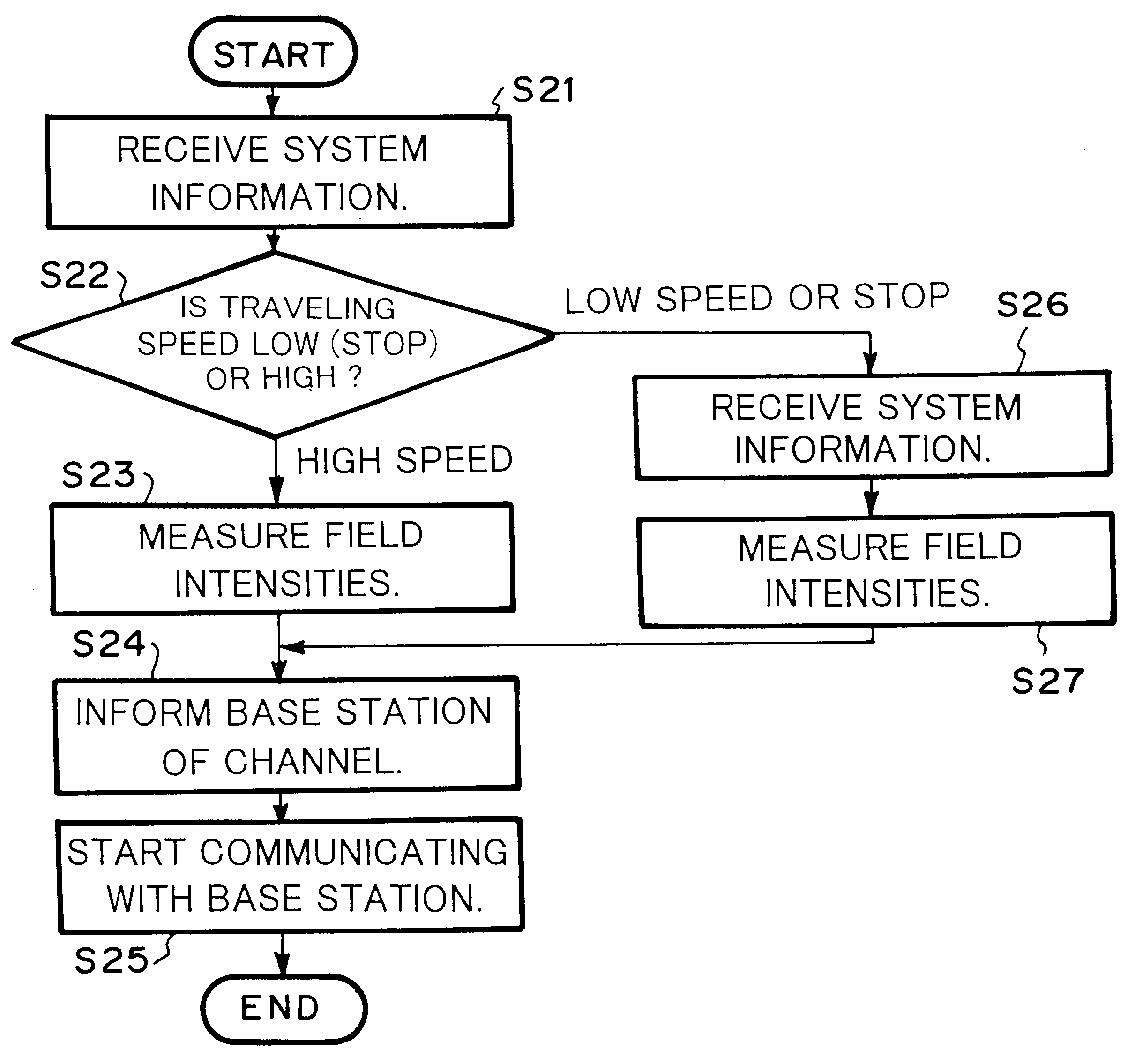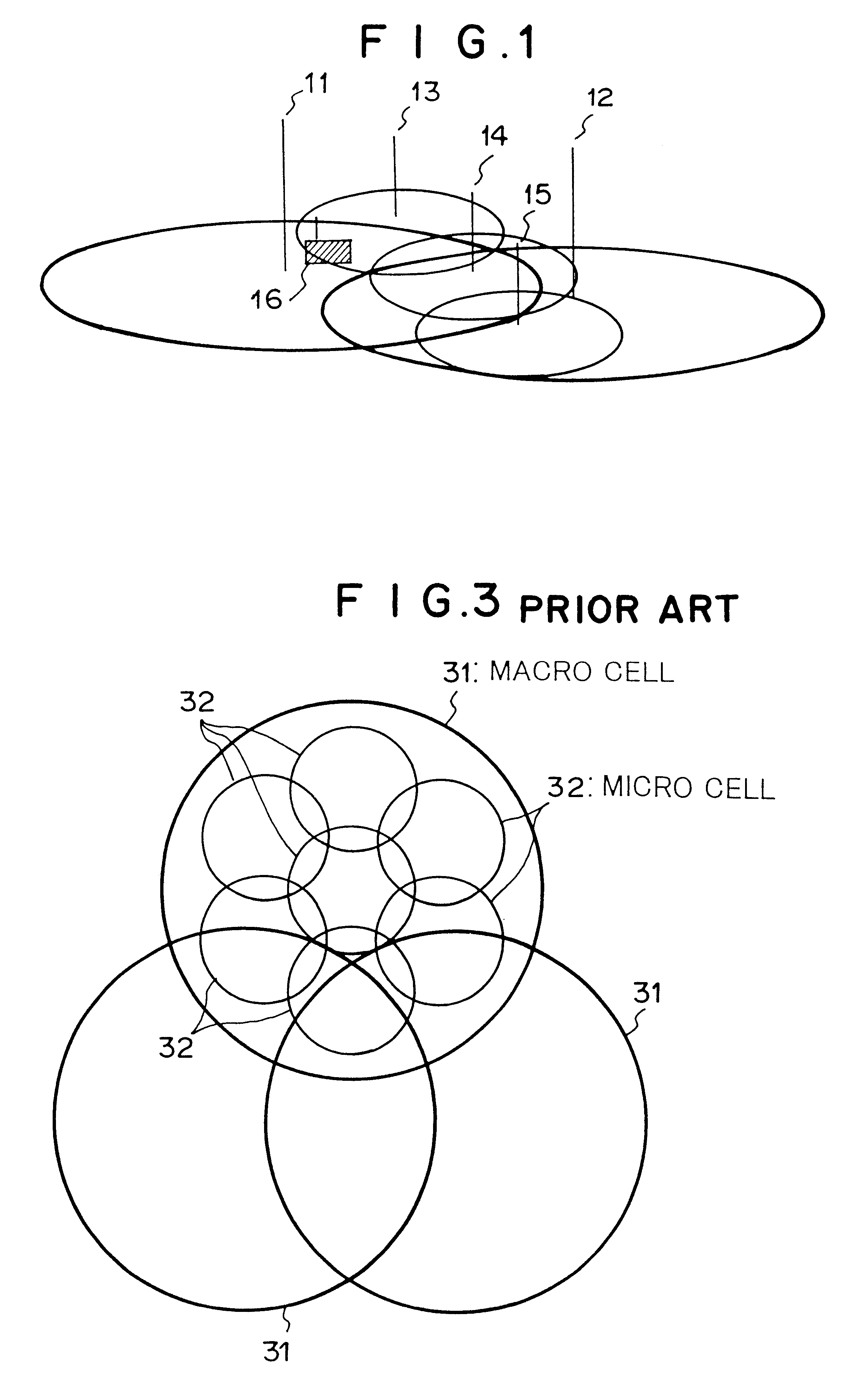Mobile radio communication system with macro and micro cell handoff based on mobile determined crossing rates and fading rates
a radio communication system and micro cell technology, applied in the field of mobile radio communication system, can solve the problems of deteriorating process performance on the radio base station side, each mobile station not having sufficient information about the system structure and current system state, and each mobile station failing to select an optimal channel
- Summary
- Abstract
- Description
- Claims
- Application Information
AI Technical Summary
Problems solved by technology
Method used
Image
Examples
Embodiment Construction
A mobile radio communication system according to an embodiment of the present invention will be described with reference to the accompanying drawings.
The mobile radio communication system according to the present invention comprises a plurality of mobile stations, a plurality of radio base stations, and a radio-base-station controlling station. The radio base stations provide service areas for the mobile stations. The radio-base-station controlling station controls the radio base stations. The radio base stations are categorized as macro cell radio base stations and micro cell radio base stations. The macro cell radio base stations form macro cells (wide radio areas). The micro cell radio base stations form micro cells (narrow radio areas) that are smaller than the macro cells. It is preferable that the macro cells and the micro cells independently cover the entire service area (namely, the macro cells and the micro cells overlap with each other).
For simplicity, in the following des...
PUM
 Login to View More
Login to View More Abstract
Description
Claims
Application Information
 Login to View More
Login to View More - R&D
- Intellectual Property
- Life Sciences
- Materials
- Tech Scout
- Unparalleled Data Quality
- Higher Quality Content
- 60% Fewer Hallucinations
Browse by: Latest US Patents, China's latest patents, Technical Efficacy Thesaurus, Application Domain, Technology Topic, Popular Technical Reports.
© 2025 PatSnap. All rights reserved.Legal|Privacy policy|Modern Slavery Act Transparency Statement|Sitemap|About US| Contact US: help@patsnap.com



